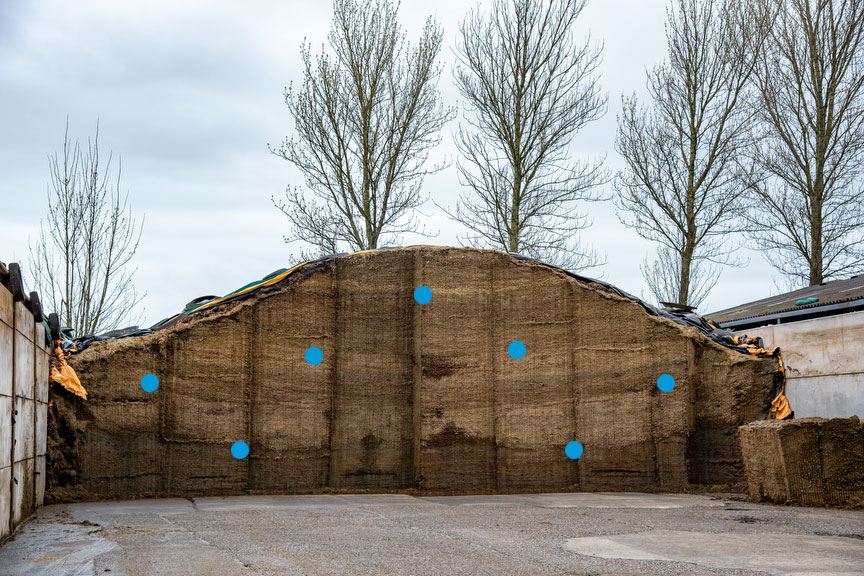- Home
- Knowledge library
- How to calculate the dry matter (DM) of forage
How to calculate the dry matter (DM) of forage
The quality of the diet offered to livestock is largely dependent on the forage it is fed. However, the quality can vary considerably as you progress through the clamp or the paddock, leading to variations in the feed. Find out why sampling forage and calculating its DM value is essential to maintain a balanced diet.
How do I take a forage sample?
As the dry matter (DM) content is probably the most critical and variable component in forage, it is essential that we can assess DM quickly, easily and regularly to ensure accurate feed formulation can be achieved.
The procedure described below is a simple test that can be performed on farm to measure DM, ideally on a weekly basis.
Items required for sampling
• Suitable probe or fork
• Microwave oven
• Small clean bucket
• Scissors and/or grass clippers
• Scales (accurately weighing to the nearest gram)
• Microwave-proof dish
• Glass (suitable for use in a microwave) capable of holding 100 ml of water
• Record sheets, pen and calculator
Clamp sampling method
The aim is to sample an area representative of the forage that will be used during that week following the sample being taken (as illustrated in the picture below).
- Using a fork, dig into the face of the silage clamp so as to avoid the drier or wetter silage at the pit face. If using a probe, push this through to the depth required.
- Take a fistful of silage from each sample point and put it into the bucket.
- Mix the silage sample by hand so that the sample is evenly distributed.

Field/paddock sampling method
- If weather conditions are stable, a weekly sample will suffice. However, where weather is variable, then samples need to be taken more frequently to adjust pasture DM allocation.
- Using clippers, take a sample representative of the grazing area.
- Cut the sample into manageable lengths (50–100 mm) and put sample into the bucket.
- Mix the sample by hand so that it is evenly distributed.
Processing the sample in the feed kitchen
- Pre-weigh the microwave dish (Weight 1) and then zero the scales.
- Accurately weigh approximately 100 g, or a quantity that comfortably fits in the microwavable dish, and record weight (Weight 2). Ensure all sample is contained within the dish as any ‘overhang’ may fall off and give a false DM.
- Place approximately 100 ml of water in a glass and put it in the back of the microwave oven. This is important as it prevents the sample from setting on fire.
- Place the sample in the microwave oven and set to 80% of power rating.
- Set the timer for 10 minutes.
- Remove the sample and weigh (Weight 3).
- Dry for a further 2 min, remove and weigh. If the weight is the same as Weight 3, the sample is dry (Weight 4). If it is lower, dry for a further 2 min and repeat the weighing. Drying time will ultimately depend on microwave power.
Calculating the DM of the sample
DM% = (Weight 4 – Weight 1) ÷ Weight 2 x 100
Once you have analysed the forage for DM content, it is important to act upon the information gathered.
This may involve readjusting the allocation of forage in paddocks (if using cut and weigh for pasture allocations), or adjusting the quantity of forage added to the diet feeder. This can be done by using the formula below:
(Previous forage allocation x old DM) ÷ new DM = New forage allocation
Example: If the DM of the forage goes from 30% down to 26% and the feed offered was 3,600 kg, then:
(3,600 x 30) ÷ 26 = 4,153 kg
So, our new feed allocation will be 4,153 kg

